The Last Supper recounts Jesus’ final meal with his apostles before he was captured by Roman soldiers and crucified in Jerusalem. The mural’s dimensions are 4.6 m in height and 8.8 m in width.
This work by Leonardo da Vinci was created between 1495 and 1498 in the Santa Maria Della Grazie convent’s dining hall in Milan, Italy. Ludovico Sforza II Moro, Duke of Milan and art patron, commissioned the painting for the Convent of Santa Maria Delle Grazie’s refectory. The topic of the painting was decided upon as the last supper that Jesus had with his apostles so that it would be appropriate for the hall where the priests ate. During this meal, Jesus is seated in the middle of the table, with 12 of his apostles on either side.
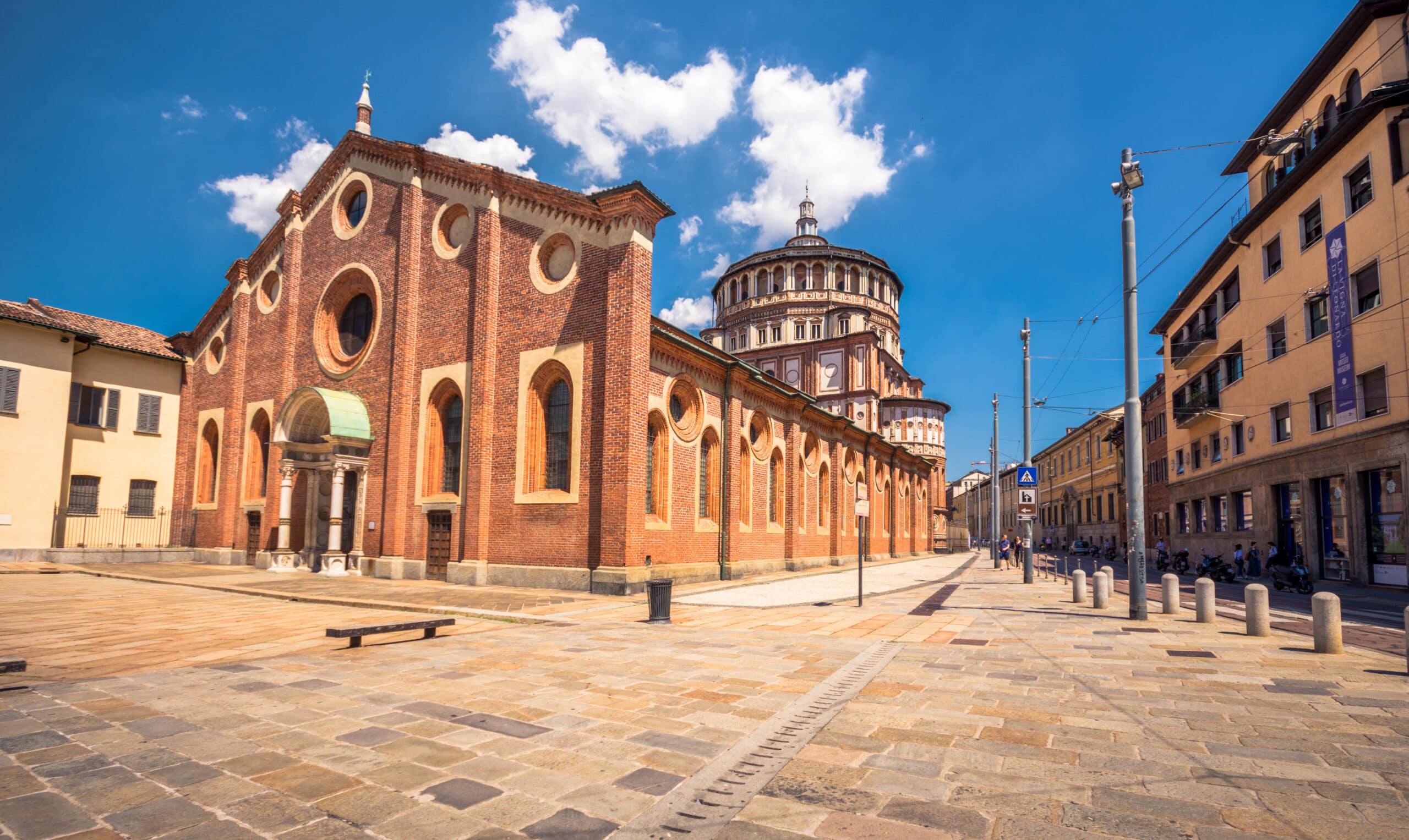
Church of Santa Maria delle Grazie in Milan, Italy. This church is famous for hosting Leonardo da Vinci masterpiece -The Last Supper-.
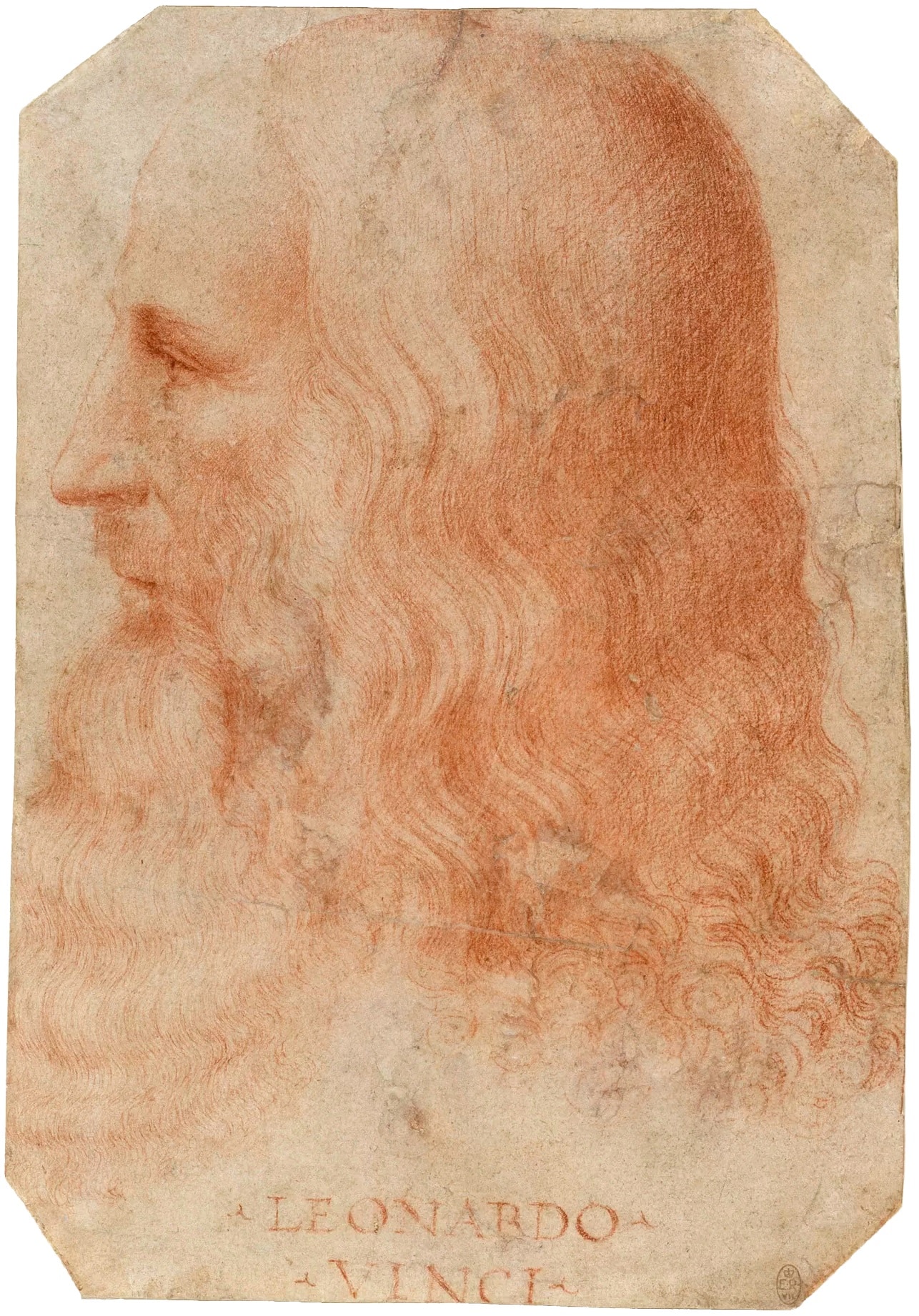
Portrait of Leonardo da Vinci. Attributed to Francesco Melzi (–1570)
In a dramatic event captured in the Last Supper, Jesus tells his apostles that one of them is about to betray him (“One of you is about to betray me,” Matthew 26:21). Each of the apostles responds differently to this tremendous event. Jesus, in the center of the image, remains calm and collected despite the chaos around him. You’ll notice that your gaze isn’t fixed on anything in particular, but that ultimately it will return to rest on the figure of Jesus. In addition to separating the Apostles into three groups based on their replies, Leonardo da Vinci’s composition of the painting makes it apparent that Jesus is the major character.
Characters in the Last Supper
From left to right, the characters represented in the painting The Last Supper are:
- Group 1: Bartholomew, James, and Andrew (left side)
- Group 2: Peter, Judas, and John
- Jesus in the Center
- Group 3: Thomas, James Major, and Philip
- Group 4: Matthew, Thaddeus, and Simon (right side)
The apostles are divided into three groups. The Trinity grouping is a symbol of the Holy Trinity, which consists of the Father, the Son, and the Holy Spirit. This is supposedly why Leonardo divided them into three distinct categories. Jesus is positioned in the center, and there are three windows directly behind him, forming a triangle.
Bartholomew, James, and Andrew, the three on the far left, are clearly taken aback by Jesus’ comments and are acting skeptical. The shocked expressions on the faces of James, who is speaking to Jesus while pointing to him, and Bartholomew, who jumps up from the table, all contribute to Da Vinci’s work.
During their conversation, Matthew and Thaddeus, two members of the group seated at the other end of the table, turned to Simon, who was seated at the head of the table, and pointed at Jesus, asking him questions and bringing up their concerns. Thomas, James the Greater, and Philip form the second triad, which falls between this group and Jesus. In their various ways, these three have turned to Jesus and are now waiting for an explanation from him. Both James Major, arms extended, and Philip, hands on chest as he speaks to Jesus, appear perplexed by the prospect of betrayal. Thomas pointed his finger upward. Thomas’s need to confirm Jesus’ wounds by touching them with his own hands after his resurrection likely has something to do with the raised index finger.
The trio, located just to the left of Jesus according to the picture, consists of Peter, Judas, and John and contains the most crucial characters in the work.
The trio of Peter, Judas, and John, placed to the left of Jesus in the image, comprises the most important figures in the piece. The most prominent member of the trio is Judas, the apostle who betrayed Jesus. Judas was terrified by the disclosure of his secret and withdrew. The only person in the shadows is Judas, whose head is likewise lower than everyone else in the image. In addition, Judas clutches a pouch in his right hand.
This bag includes thirty silver pennies that Judas earned for disclosing Jesus’ identity to the Romans. The left hand of Judas may be seen reaching towards the dish in front of him. Also lying on the same platter is Jesus. In response, Jesus asked his disciples, “Who would betray me?” It is an allusion to his response to the question, (The one who will betray me will be the one who dips his fingers into the same dish as me.)
Judas’s head, whose face is obscured, is the lowest among the apostles, highlighting his traitorous nature. Peter, who stands directly behind Judas and has white hair and a beard, is clutching a knife in his rear hand. Peter will cut off the ear of one of the Roman soldiers when they take Jesus. Therefore, a knife was used to make allusion to this occurrence in the piece.
John is the youngest of Jesus’ apostles. He is also known as John the Gospel, John the Evangelist, or just John. In the Bible, John is called “Jesus’ favorite apostle.” In response to Jesus’ shocking explanation, John moved toward Peter in an excited state.
In contrast to the Apostles, who were frantic and confused about Judas’ betrayal, Jesus maintains a dignified stance in the middle of the table. From the bread that Jesus pointed to with his left hand, it might be inferred that he also reveals the premise of the Eucharist’s bread-and-wine ritual. Jesus, who instructed his apostles to consume the wine as his blood and the bread as his flesh, is pictured at a dining table discussing this ritual and betrayal in order to honor him following his death.
Contrary to tradition, Da Vinci did not include a halo above the head of Jesus when painting the Last Supper. Before Leonardo da Vinci, every representation of the Last Supper featured Jesus and his disciples with halo-like speckles, indicating that they were saints. But da Vinci disregarded this custom and painted them without halos.
Analysis of the Last Supper – Techniques
Leonardo’s interpretation of simultaneous activity resulted in his masterpiece, The Last Supper. The effort required to explain the movement so precisely required not only observation of nature but also knowledge of mathematics and physics. In The Last Supper, the artist resorted to the rules of linear perspective, in which objects appear proportionally smaller as though in the viewer’s eye.
Although Leonardo’s work is a mural, it is not a fresco painted on wet lime. Leonardo chose to paint on the stone wall with a technique he came up with himself—a mix of tempera and oil paints—so that the colors would be more vivid.
This is because Da Vinci desired to capture the image of an oil painting. The pigments did not stick to the wall permanently due to da Vinci’s unique process, and the wall quickly began to flake off. The piece, which lost a major portion of its surface in the first 50 years after its creation, was exposed to a variety of forms of deterioration, including the bombing of the monastery in which it was housed during World War II. Due to the door that was opened later in the 17th century, Jesus’ feet cannot be seen in the center of the picture. The crucifixion attitude is said to be reflected in Jesus’ feet.
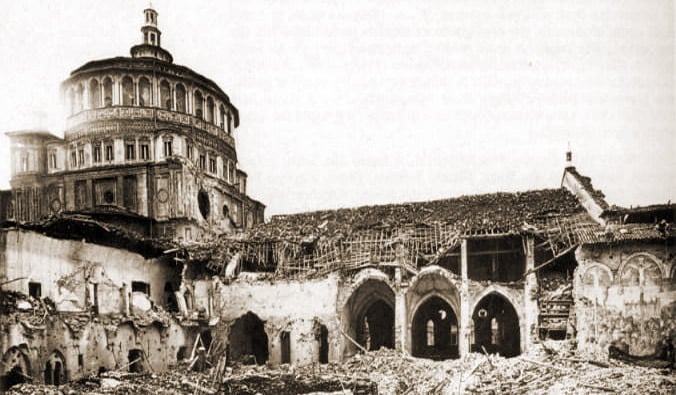
The refectory and the right side of the church after the bombing, 1943
Although the Last Supper is a must-see in Italy, the monastery that houses it was not designed to accommodate big crowds. The picture may only be viewed for 15 minutes in groups of 35 individuals. It is recommended that tourists get tickets to see the piece at least two months in advance. Our website contains all tour and ticket alternatives.

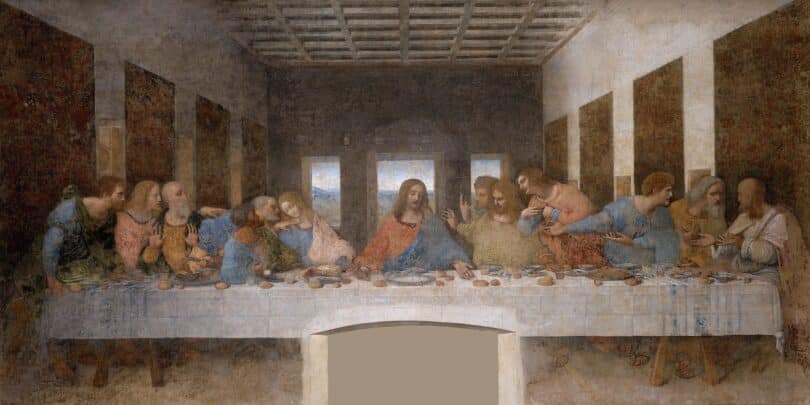
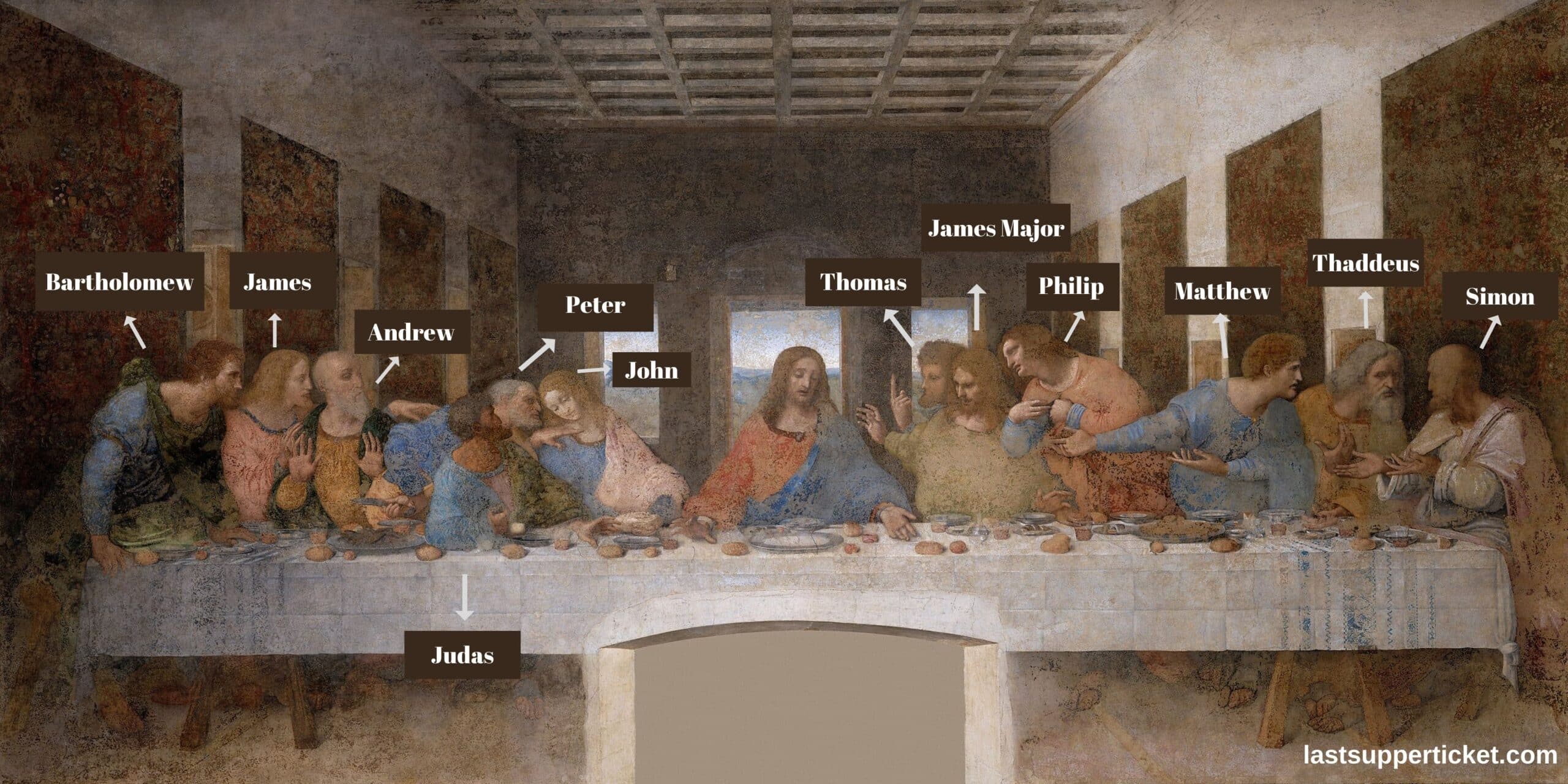
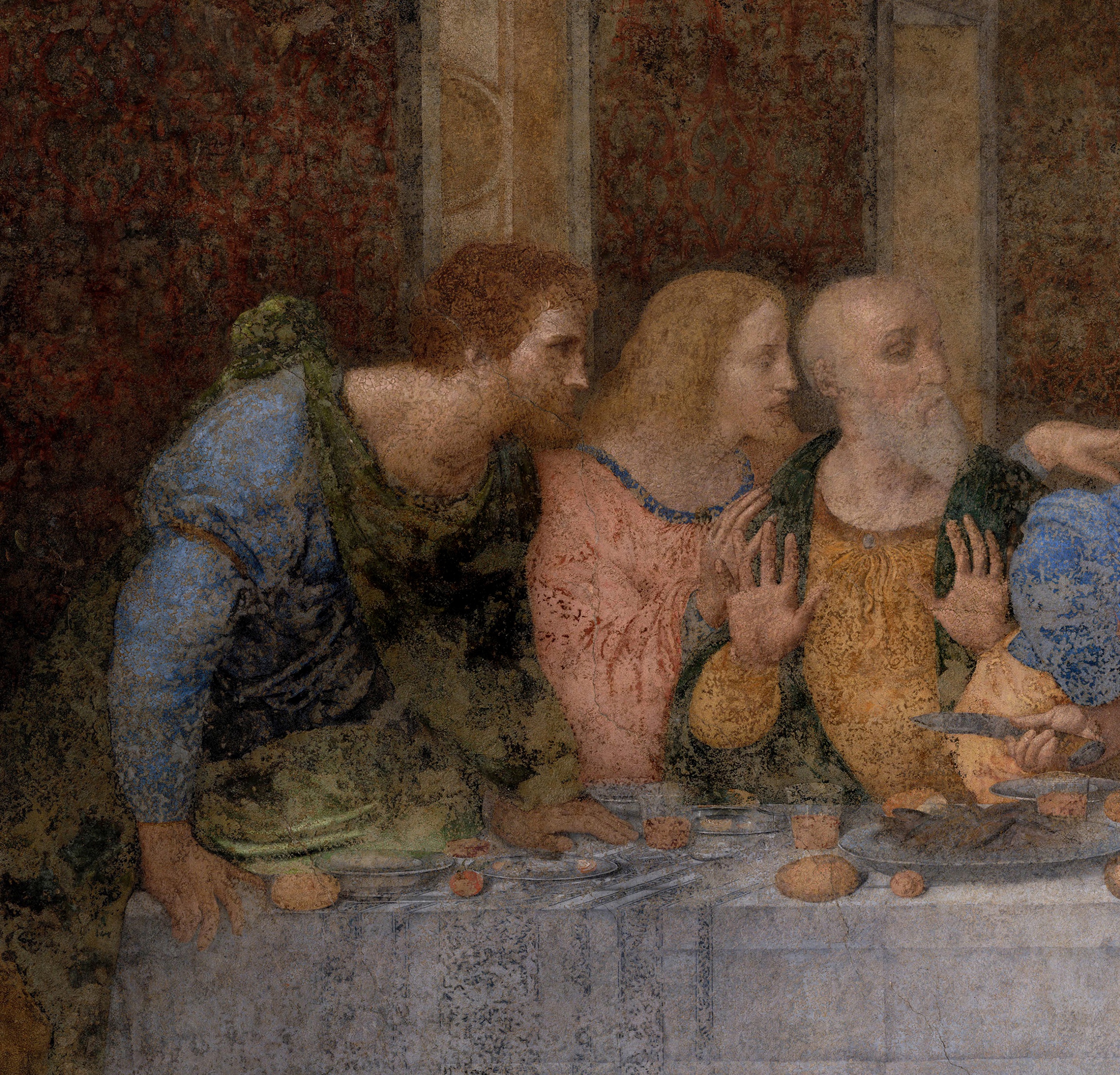


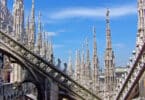
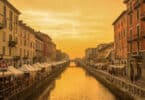
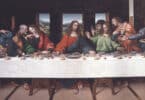
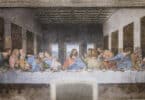
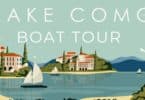

[…] Although the work was heavily damaged in its time, it still has the power to leave a great impression on those who see it. In this work, Leonardo worked “al secco (tempera paints on dry plaster)”. Tempera is a type of paint in which colour pigments are bonded with a binder consisting of water and oil and is not very durable. Numerous attempts to restore the painting have so far only been successful to a certain extent. Today you can visit this work of art by booking a Last Supper ticket. (To read our detailed analysis of Leonardo da Vinci’s “The Last Supper”, you can check out our article titled “Analysis of the Last Supper“.) […]
As great as Da Vinci was, I think he goofed on the perspective with Judas’ elbow on the table. Seated on the opposite side, there is no way to rest an elbow so close to the near side of the table and still have one’s shoulders nearly horizontal.
Despite this, Da Vinci exhibited amazing foretelling by presenting how TV-show families would sit at the dinner table: everyone on the same side. Nobody does this in reality.
Your wrong my friend,. I tried to recreate the position myself and to my astonishment? I was able to rest my elbow on the table… If you disi, try it out for yourself!!!! Therefore dispelling anyone else’s account…GOD BLESS AND HAVE A BLESSED LIFE…
Hi I like this
thanks. was useful for my art assignment.
For a man so ever mindful of proportions, I’ve always wondered why DaVinci made Thomas’ finger a knuckle longer than it should be. Nobody seems to offer an explanation as to its significance, but it has always stuck out to me. The master seems to be a man who had a reason for everything he included in his paintings, like the knot tied in the tablecloth on the lower right.
ty this helped me with my exam at school!